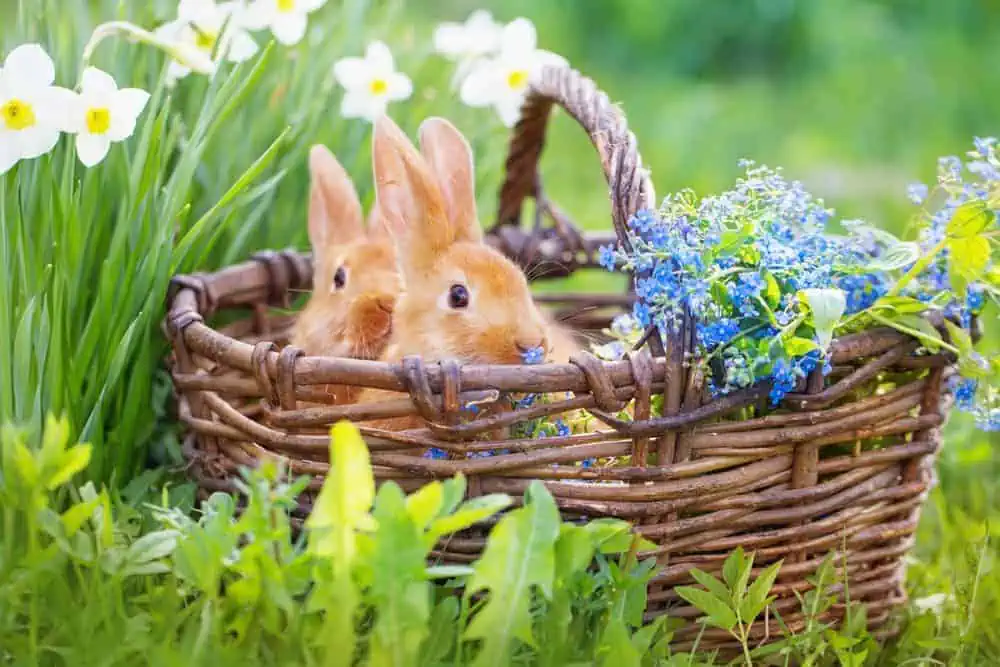
Whatever type of rabbits you have – from long-haired Lops to the dapper Rex or cuddly Flemish Giant, all bunnies need a regular grooming routine.
Just like cats, rabbits spend a huge amount of time grooming and keeping clean is very important to their health. If you have a pair or small group of bunnies, you’ll often observe them grooming each other.
Rabbits, especially long-haired varieties, need our help to keep them take care of their soft, fluffy coats. This is particularly important when they are moulting. When rabbits groom themselves, they can swallow a lot of fur. Too much can cause their gut to slow down, which can cause serious health issues. Unlike cats, rabbits cannot cough up a fur ball, so it’s vital to remove as much loose fur as possible.
How often should you groom?
So, how often should you groom your bunnies? Short haired rabbits should be brushed twice a week, while those with long hair need brushing every day. The Rabbit Welfare Association & Fund recommends a daily groom to help you and your bunnies get to know each other better as well as providing the opportunity to regularly check for any problems.
Get comfortable
You can either hold your rabbit by supporting their backside as if they are sitting up – useful when trimming nails or brushing tummies – or by placing them on a towel. Never, ever put your rabbit on their back, as this will frighten them into ‘playing dead’ as part of their prey animal response to being caught by a predator.
Anything unusual?
Start by checking him or her from head to toe. Look out for anything out of the ordinary, such as scaly patches inside the ears, a discharge from the eyes or nose, lumps and bumps, scratches or redness, or diarrhoea. Look at your rabbit’s body condition – they should not be too fat or too thin.
Check round the back
The bottom area needs careful attention to avoid fly strike – a potentially fatal condition caused by flies laying their eggs on a rabbit’s skin, particularly around a dirty bottom, which quickly hatch into maggots that chew their way into the rabbit’s skin.
Teething problems?
Your rabbit’s back and front teeth must be checked regularly especially if they are beginning to lose weight for no apparent reason. Dental problems are common in rabbits, but feeding them the correct diet and providing a bunny-sized bundle of high quality feeding hay every day can help prevent this.
The right tools for the job
It’s important to remember that rabbits’ skin is very delicate and easily damaged, so only use grooming equipment that’s designed especially for bunnies, not for dogs or cats. Your grooming kit should contain:
- Rubber pimple brush or mitt Useful during moulting, when used carefully, they can gently remove the build-up of loose fur quite effectively.
- Soft brush Good for general grooming, many rabbits enjoy being gently brushed. Always go in the direction their fur grows.
- Comb These are useful for longer-haired rabbits, or when short-coated rabbits are moulting, but use carefully to avoid injury.
- Nail clippers Choose specially-designed rabbit nail clippers. Never use ordinary scissors or human nail clippers as these can split the nails and hurt your rabbit.
The matt factor
If your rabbit has any matted fur that you cannot gently brush out, try untangling with your fingers, but be very careful not to tug on the fur as that can be very uncomfortable and may cause injury to your rabbit’s skin. If this doesn’t work, you may need to cut the matt out. Be very careful, especially if it’s close to the skin. You may prefer to ask your vet to clip the fur instead.
Unwanted visitors?
While brushing, you may notice evidence of fleas. This could be either the fleas themselves, or dark flecks that turn red when brushed out with a damp tissue. If you spot these signs, speak to your vet about the best flea treatment for your rabbits. It’s important to tackle fleas because as well as being uncomfortable, they can also cause anaemia.
Rabbits and water don’t mix
Unless it’s absolutely essential, you should avoid bathing your rabbit. When wet rabbit hair clumps together, it takes an age to dry and damp rabbits are potentially prone to respiratory infections and hypothermia.
FIND OUT more about how to ensure your rabbits are happy bunnies here
FIND OUT about fun Easter egg hunt games you can play with your pets here >>
Sources: Vets4pets.com, bluecross.org.uk, rabbitwelfare.co.uk














